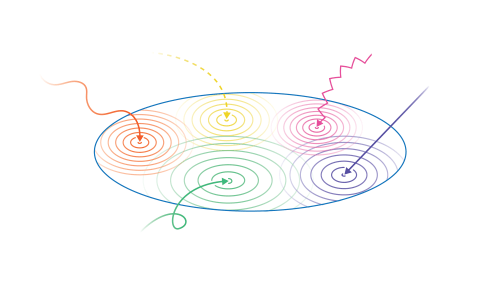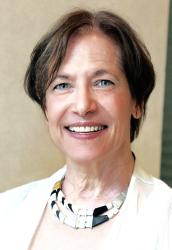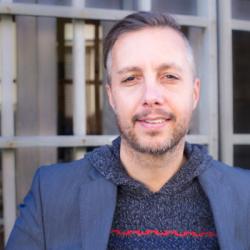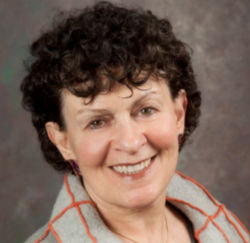Daniel Pink’s seminal book, A Whole New Mind, presaged a paradigm shift. His ominous words, “The keys to the kingdom are changing hands,” put lawyers, programmers, and data crunchers on alert. He predicted that makers and creative empathizers would soon take their place as workers with the most valued skills. They would be the ones to find success in the 21st century.
In November 2022, the release of ChatGPT, which can synthesize data, write like Shakespeare, and replicate images like Picasso, made this warning ever more prescient. Originality—the ability to create something new—will become the valued currency of our time, especially in the face of the increasing chaos and complexity caused by things like pandemics, natural disasters, and climate change.
The inability to think across disciplines or to flexibly apply the lessons from one area of expertise to another leaves us limited in our ability to tackle what are known as wicked problems—problems for which there is no ready solution. Today, few, if any, stakeholders possess the knowledge and resources needed to understand and act on these wicked problems independently. Instead, people must learn to collaborate to create a richer understanding of the problem and unlock more creative solutions.
LSX Fellowship model of tackling wicked problems
The Learning Sciences Exchange (LSX) fellowship program, launched in 2018, was designed to catalyze this creativity by fostering cross-sector collaboration. As a first step in developing the model, we tapped into a wicked problem that has plagued the scientific community: How do we translate the latest science for more public consumption in the field of education and human development? Given our own expertise in children’s learning, we chose to focus on why major advances in the science of learning rarely leap out of the journals and into the hands of educators, policymakers, journalists, and parents? Might it be possible to tackle this problem by bringing together high-achieving, mid-career professionals from different cultural backgrounds and sectors who all work in areas related to children and family or educational issues?
Collaboration among diverse players can transform the sometimes adversarial nature of problem-solving into a mutually beneficial search for information and solutions.
As author and LSX alum Annie Murphy Paul describes in her book The Extended Mind, solving complex problems requires the activation of multiple minds coming together. Paul cites research suggesting that humans “have unequaled capacity for coordinating thought and behavior with other members of their species.” As group members attend to something together, she writes, they produce “greater overlap in ‘mental models’ of a problem, and therefore smoother cooperation while solving it.” In other words, collaboration between people from different perspectives can begin to establish common ground between them and can lead to creative solutions to wicked problems.
The fellows from our current cohort of the fellowship program come from Africa, Europe, Latin America, the Caribbean, Europe, and North America. Our approach is designed to spark innovation and help specialists see through different lenses beyond what their own sectors could offer. By jumpstarting a way to make connections with people from different sectors and their framing ideas, we help our fellows develop an LSX mindset or a process of solving problems from the vantage point of multiple perspectives.
In the white paper released by Brookings and New America last week, “The LSX Model of Cross-Sector Collaboration: Tackling Wicked Problems and Catalyzing Creativity,” we review the program’s origins, design, and challenges and opportunities. We delve into what we’ve learned from five years of running our unusual international fellowship program, which now includes 42 experts from policy, science, social entrepreneurship, journalism, and entertainment. We highlight our advances and the struggles while also offering a map for how to extend this model to other problems that often feel insurmountable and are encountered in other areas.
Four steps explain how the model works. First, we learned that collaboration between people begins to establish common ground, essential for effective problem-solving. Yet, establishing this common ground is not easy. It requires going below the surface of a particular event or topic to understand individuals’ different mental models of the same problem. Our competitive world does not prioritize opportunities and spaces to plumb those depths and develop the skills for collaborating effectively. Making room for this kind of cross-sector collaboration is key to driving innovation.
Second, once people reflect on their own way of knowing, they can begin to adopt a common vocabulary and stop talking past each other using the same terms that mean different things. The fellows can decide which of the many problems (bigger and smaller) they wish to tackle. It is here that our fellows debated not only what reigns as a priority, but also how to think about or frame the issue they have chosen.
Third, we ask our fellows to build something together. This act of working on a small piece of the puzzle that generates a prototype helps diverse people bring different lenses together to support a tangible outcome. The problems these groups solve are not on the order of magnitude of education in its totality, but nonetheless carve out significant pieces of the problem.
Fourth and finally, a prototype is born, and—more importantly—so too is a collaborative network that can be quickly mobilized to address issues as they arise—creating a kind of international and rapidly deployable think tank.
By way of example, the Bunny to Bunny group created a prototype board book to share the science on how particular types of caregiver-child interactions build outcomes in language and reading. The Playful Learning Challenge team created gamified math and STEM activities for parents and young children using the latest science as their base.
While these products demonstrate ways in which policymakers, journalists, entertainers, scientists, and social entrepreneurs can begin to work together toward a solution to a problem, the more powerful outcome is that they now form a community of thinkers that address any number of issues surrounding family and child health or education.
The LSX cross-sector model was born out of the need to help put the most current scientific knowledge in the hands of the people who can benefit from this knowledge. Scientific jargon was turned into what Hirsh-Pasek and Golinkoff call “edible science” that is accessible, digestible, and usable. This would not have been as easily achievable without the cross-sector collaboration that generated creative solutions to societies problems.
We invite you to explore the LSX program on our website, watch videos of the prototypes that have emerged so far, and learn more about our fellows in the current and prior cohorts, who hail from eight different countries and have incredible expertise and experiences to share with each other over the coming years.
The LSX model can be useful well beyond the realm of education to bring positive change to other fields, such as housing, health care, sustainability, financial security, and more. Collaboration among diverse players can transform the sometimes adversarial nature of problem-solving into a mutually beneficial search for information and solutions.
The Brookings Institution is committed to quality, independence, and impact.
We are supported by a diverse array of funders. In line with our values and policies, each Brookings publication represents the sole views of its author(s).











Commentary
Sparking creativity and addressing wicked problems via the new LSX model of collaboration
April 18, 2023